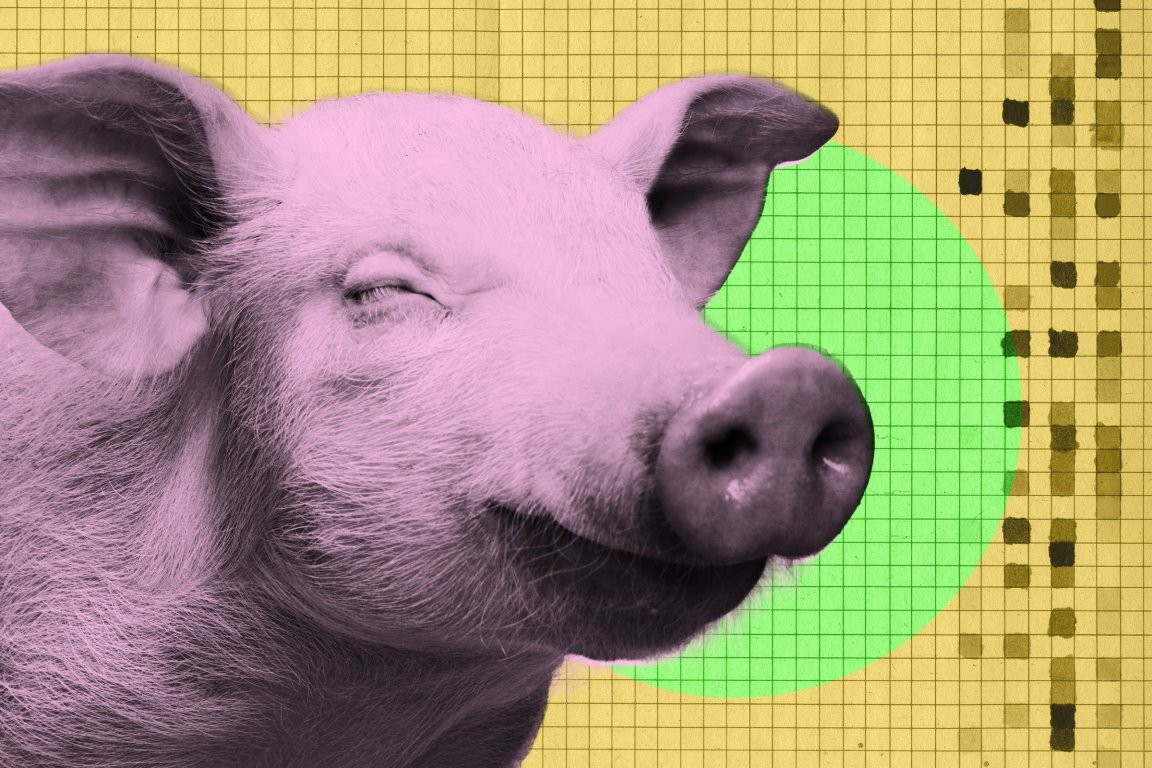New Startup Harvests Bacon Without Killing Pig
Pork may be cheap, fatty, and flavorful, but pig farming isn’t without its downsides. Pigs are highly social creatures — capable of displaying distinct personality traits as well as emotions like stress and fear — and are considered the fifth most intelligent animal in the world, demonstrating cognizance that rivals that of a three-year-old human child. The environmental impact of factory meat production is also astounding.

In This Article:
- Pigs are intelligent, social, and emotional — and factory farming has an enormous environmental footprint
- Grist’s verdict: from 'diet meat' to 'taste great'
- FDA approval and price signals early-stage, small-scale production
- Can Mission Barns revolutionize meat consumption, or is this a hopeful detour?
- About the author
Pigs are intelligent, social, and emotional — and factory farming has an enormous environmental footprint
Yet since the 19th century, we’ve bred, fattened, and harvested these sensitive creatures on an unprecedented scale. Now, a new startup named Mission Barns is looking for a way to change that: the company peddles in bioreactor-grown meat, which it says is a sustainable alternative to the horrific industrial meat industry. The process works like this: workers first take a small sample of fatty tissue from a live animal — in Mission Barns’ case, a Yorkshire pig living in upstate New York named Dawn. Lab workers then add plant-based sugars, proteins, and vitamins to the fat culture and fatten the sample in a cultivator, mimicking the growth a pig’s body would undergo naturally. After a two-week incubation period, the meat is then 'combined' with plant protein to create a product that’s technically real meat, but without all the cruelty that defines factory meat farming. The end result can then be cooked into all manner of traditional meat products, such as sausages, salami, and bacon.

Grist’s verdict: from 'diet meat' to 'taste great'
According to a review from Grist, the result is something like 'diet meat,' tasting a 'little less meaty' than the real deal. That said, the fact that Dawn the Yorkshire pig is still alive and well has to count for something — and, as the food reviewer writes, the resulting foods still 'taste great.' Grist notes that the meat grown by Mission Barns is 'unstructured,' meaning it’s not trying to replicate the fatty conditions of ultra-specific cuts like loins or shanks. Instead, the alt meat is meant to stand-in for those products that use pork as a base. This freedom allows the company, and the restaurants they partner with, to play around with specific flavor profiles and growth processes, turning the bioreactor into an extension of the kitchen. The bacon, for example, is said to have a 'nice applewood smoke,' while the meatballs had an appropriately 'springy' mouthfeel.

FDA approval and price signals early-stage, small-scale production
Mission Barns was approved for US operations by the Food and Drug Administration back in March, making it just the third company to receive US regulatory approval to sell lab-reared animal cells for public consumption. At the moment, the operation is pretty small-scale — Grist notes that a pack of eight meatballs currently sells for a lofty $13.99 in Berkeley, California, which is steep but still light years lower than the lab-grown meat of yesteryear, which typically cost around $300,000 per burger patty. That said, the startup is reportedly looking to scale up production and start selling its proprietary bioreactors to other food companies.

Can Mission Barns revolutionize meat consumption, or is this a hopeful detour?
Whether Mission Barns can succeed at revolutionizing meat consumption in one of the most carnivorous countries on the planet remains to be seen, but if it means little fellas like Dawn won’t have to die in an industrial slaughterhouse to satisfy our nation’s cravings, it’ll certainly be worth the effort. More on startups: Startup Secretly Working to Gene-Hack Human Baby

About the author
I’m a tech and transit correspondent for Futurism, where my beat includes transportation, infrastructure, and the role of emerging technologies in governance, surveillance, and labor.

